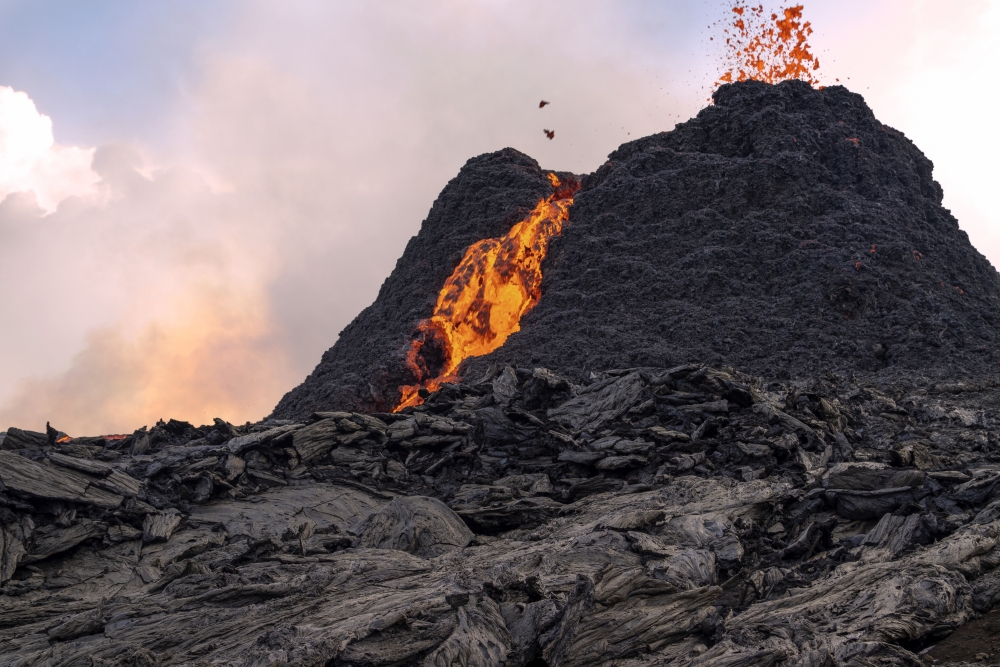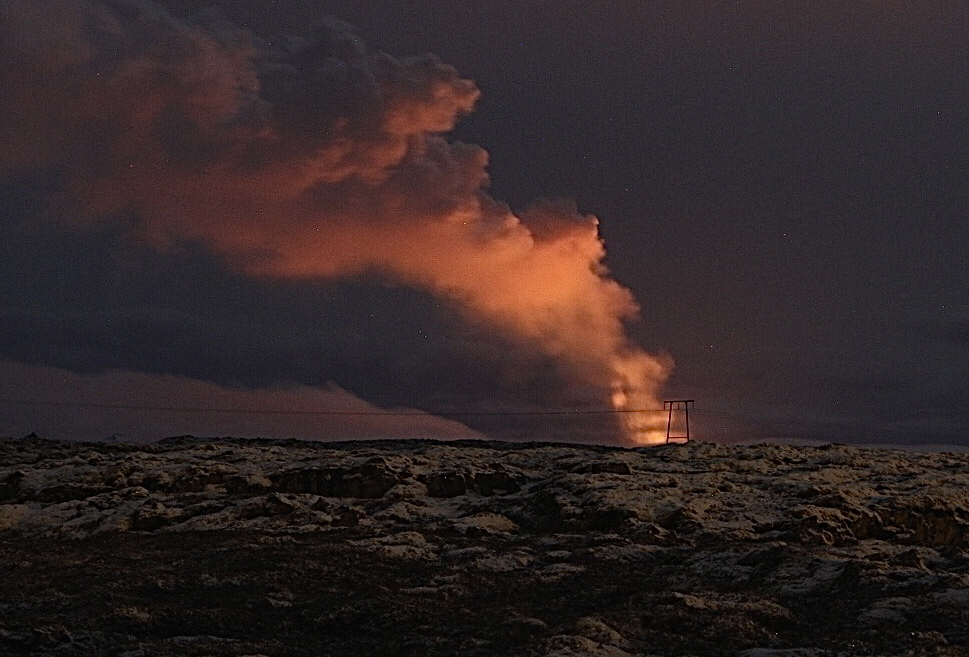
The Volcano Down the Road
On March 19, the Geldingadalur region of Iceland’s Reykjanes Peninsula gained a new volcano. While not the explosive, ash-spewing spectacles of the 2010 Eyjafjallajökull or 2011 Grímsvötn eruptions that clouded the sky and disrupted air travel, the bubbling, flowing Fagradalsfjall volcano has nevertheless captured the imagination of locals and visitors alike, who flocked to the erupting fissure.
UC Santa Barbara geology professor Matthew Jackson was one of those people. Jackson has been working in Iceland for nearly 20 years, and a recent research trip put him in the right place at the right time to catch this latest eruption.
“It was serendipitous,” he said.
Iceland hosts some of the world’s most volcanically active hotspots, localities where unusually hot upwelling rock from the deep Earth generates anomalous melting and volcanism. Nonetheless, catching an active eruption is largely still a matter of luck and timing; many eruptions there have happened in remote, often inaccessible area.
“This one is unusual in its proximity to the main population center,” Jackson said. Located less than 40 kilometers (about 25 miles) from the capitol city of Reykjavik, Fagradalsfjall is a fissure eruption, enabled by the slow pulling apart of two tectonic plates that meet at Iceland.
“You have hot plumes of upwelling material from the deepest mantle, right above the Earth’s core,” Jackson said. “These regions of mantle upwell because they’re hot and have low density.” A rising plume of hot rock melts beneath Iceland, and the molten rock makes its way through the crust. A tear in the crust provided a pathway for the magma to reach the surface, in what was a previously unrecognized fissure, according to Jackson.

The volcano lights up the night sky
Photo Credit: ANNA MARIA SKULADOTTIR
“Geldingadalur was basically a swamp,” he said. “And there was a fissure that opened up and lava started coming out of a vent, and it was just a lot of spatter.” These small founts of lava eventually built several spatter cones, but as Fagradalsfjall continues to flow, the basin where the spatter cones are located is starting to fill up. Scientists expect to see high-volume flows.
“The volcanic cones are slowly getting submerged,” Jackson said. “Sometime this week or next, the lava’s going to spill over into the next basin.” Because the flow was so slow, and because wind conditions kept the volcanic gases moving out of the basin, he was able to pack up his rock hammer and face mask and with his nine-year-old daughter head into the field.
“She’s been going out into the field with me in Iceland for years,” he said. “But this was like a Jurassic Park moment for her because she’s seen all these old basalts, but she’s never seen how these basalts form.”
The eruptions came after an unusual swarm of earthquakes in the area over several weeks. People living in Iceland will come to expect a certain amount of seismic activity, but the roughly 50,000 temblors from late February to mid-March had everyone on edge.
“The frequency and intensity of earthquakes was just astounding,” Jackson said of the magnitude 3, 4 and 5 quakes that would shake everyone awake in the middle of the night. The subsequent eruption gave viewers and visitors an intimate look at the active geology that’s responsible not only for volcanoes and earthquakes in Iceland, but also hot springs and geysers, fertile soil and abundant geothermal energy.
Jackson, who studies what lava can tell us about the Earth’s deep interior, is actively involved in ongoing research on the eruption at Fagradasfjall, led by Icelandic collaborators. The young volcano will feature in his upcoming spring quarter classes, during which he plans to take his students on a virtual trip to the site. They could be witnessing the start of a centuries-long eruption cycle in the area.
“This part of Iceland hasn’t had an eruption in 800 years,” he said. The previous eruptive cycle on Reykjanes Peninsula overlapped with the early history of Iceland, including a famous event in Icelandic history — Leif Erikson’s expedition to Vinland (North America), he added.
“This could be the start of a new cycle,” Jackson said. “What this means is that Iceland could have a whole series of eruptions for the next couple hundred years on this peninsula, a region that includes Reykjavik and the international airport in Keflavik. If history teaches us anything, this could be the beginning of another eruption cycle on the Reykjanes Peninsula.”



